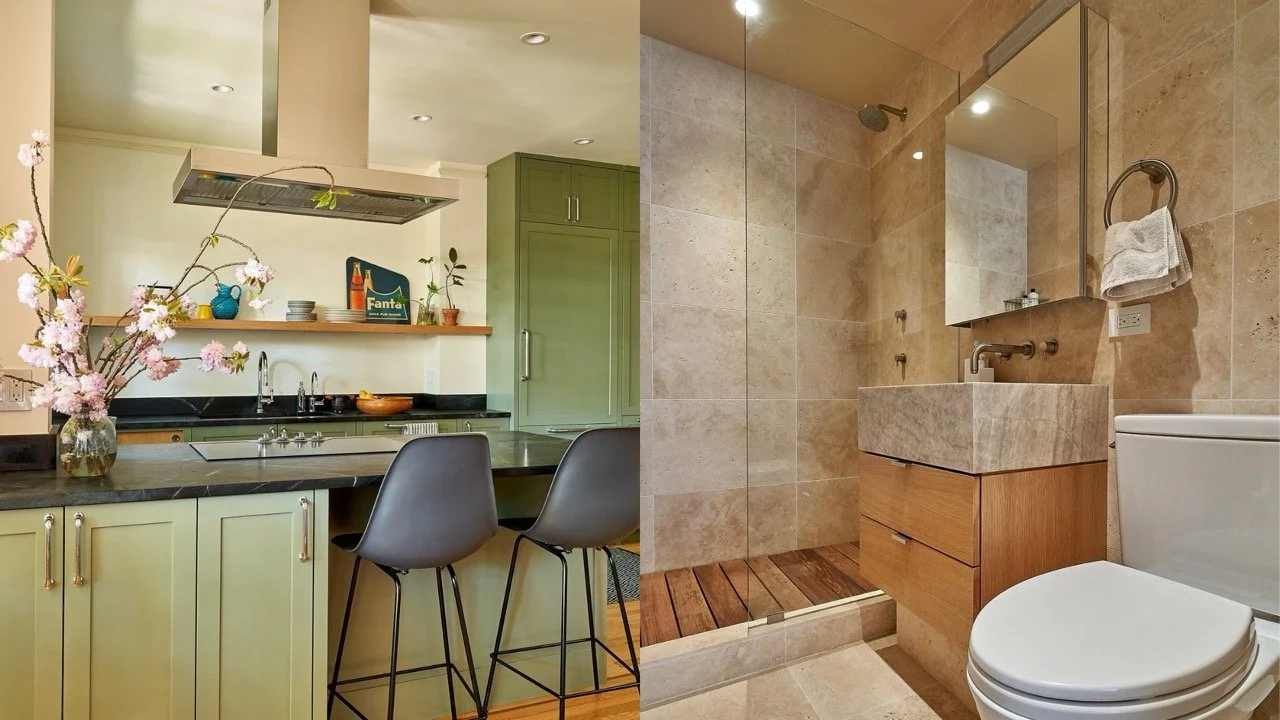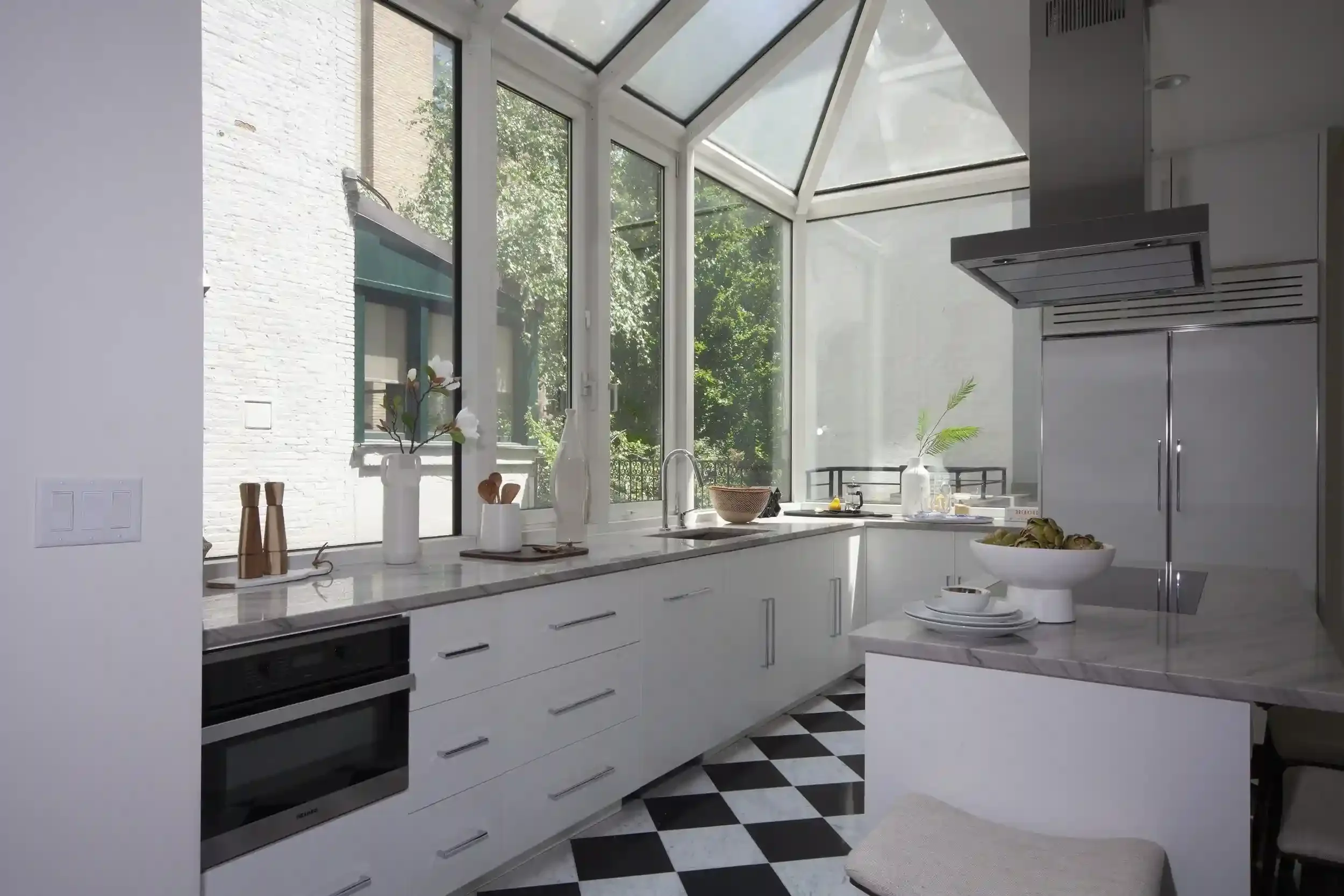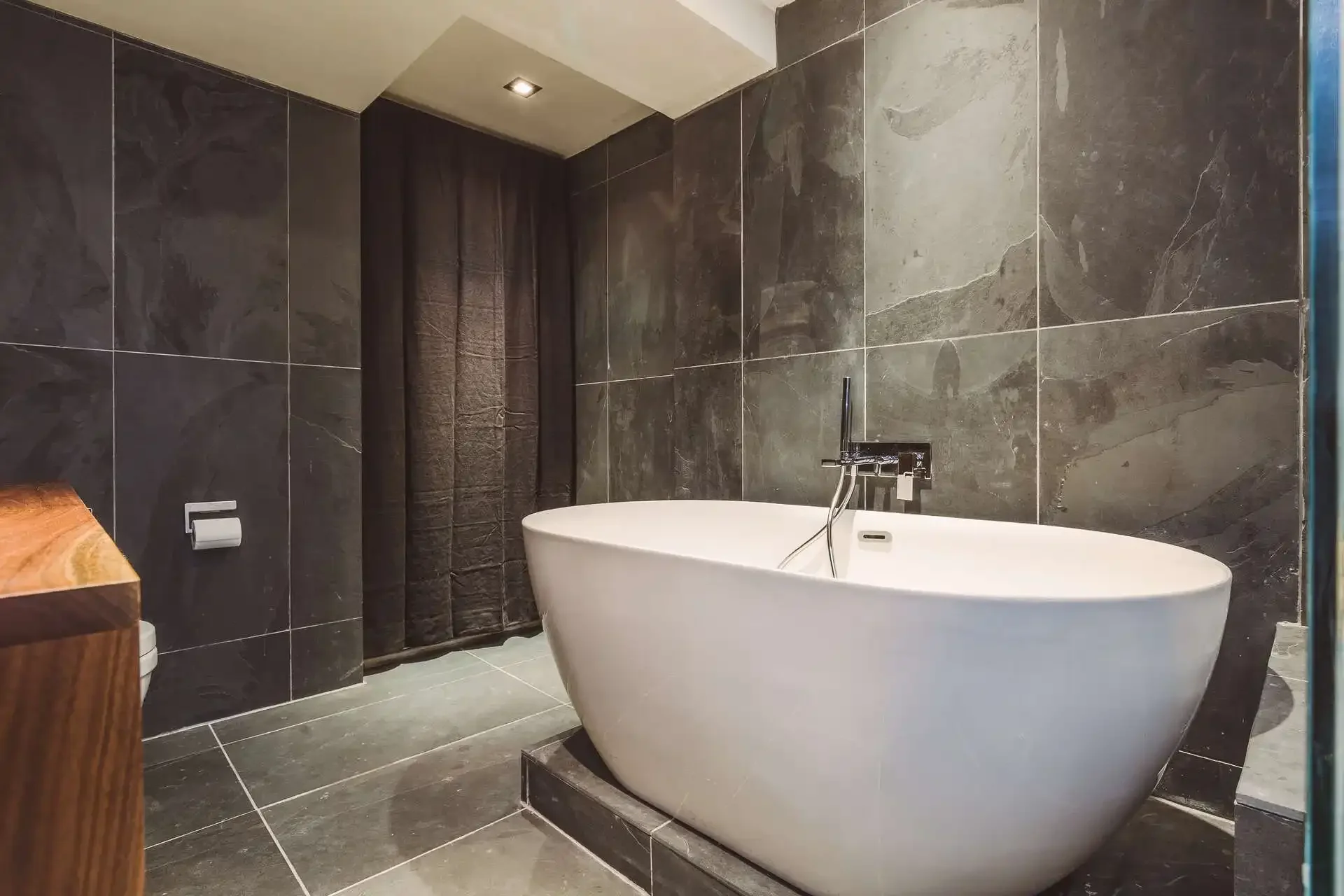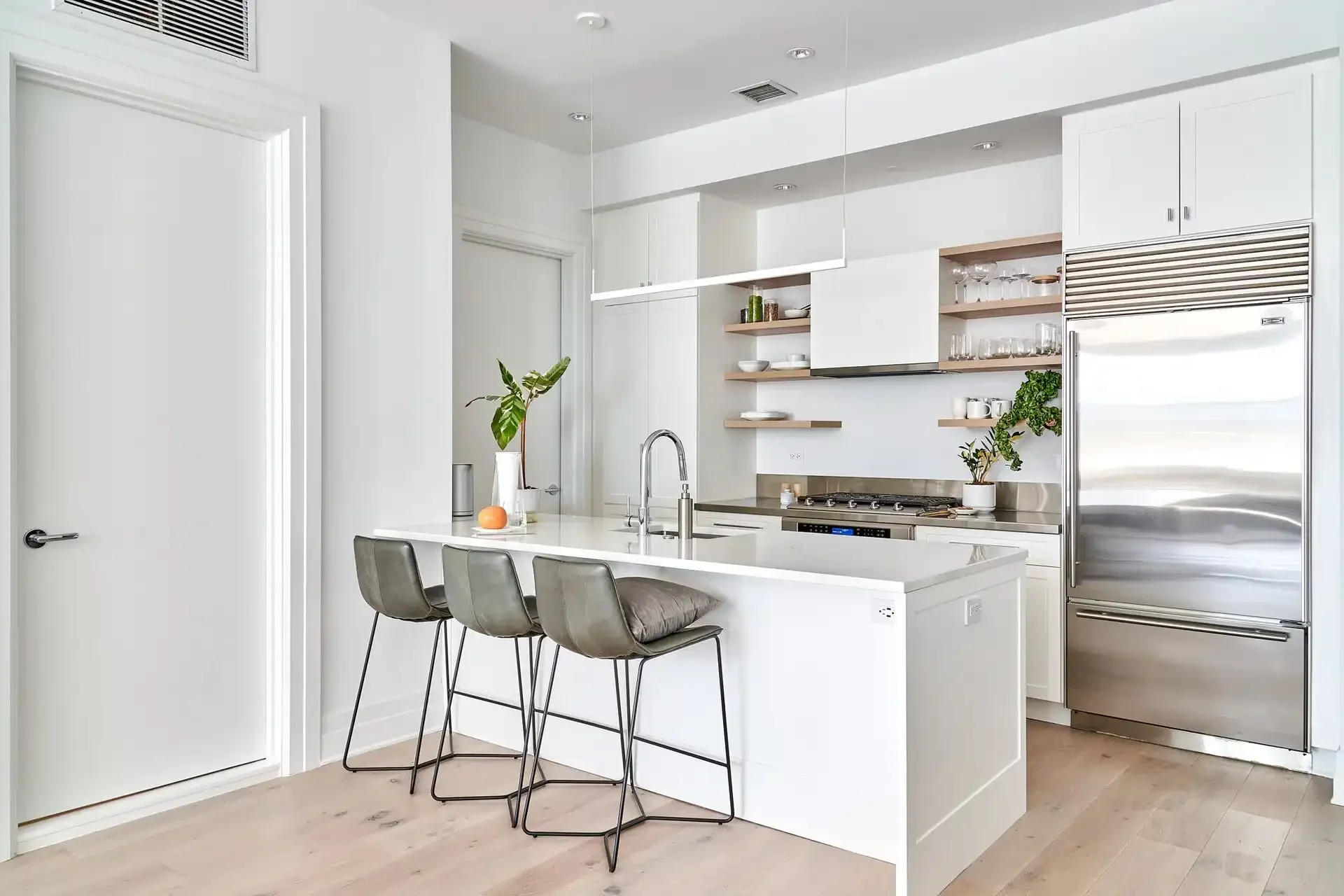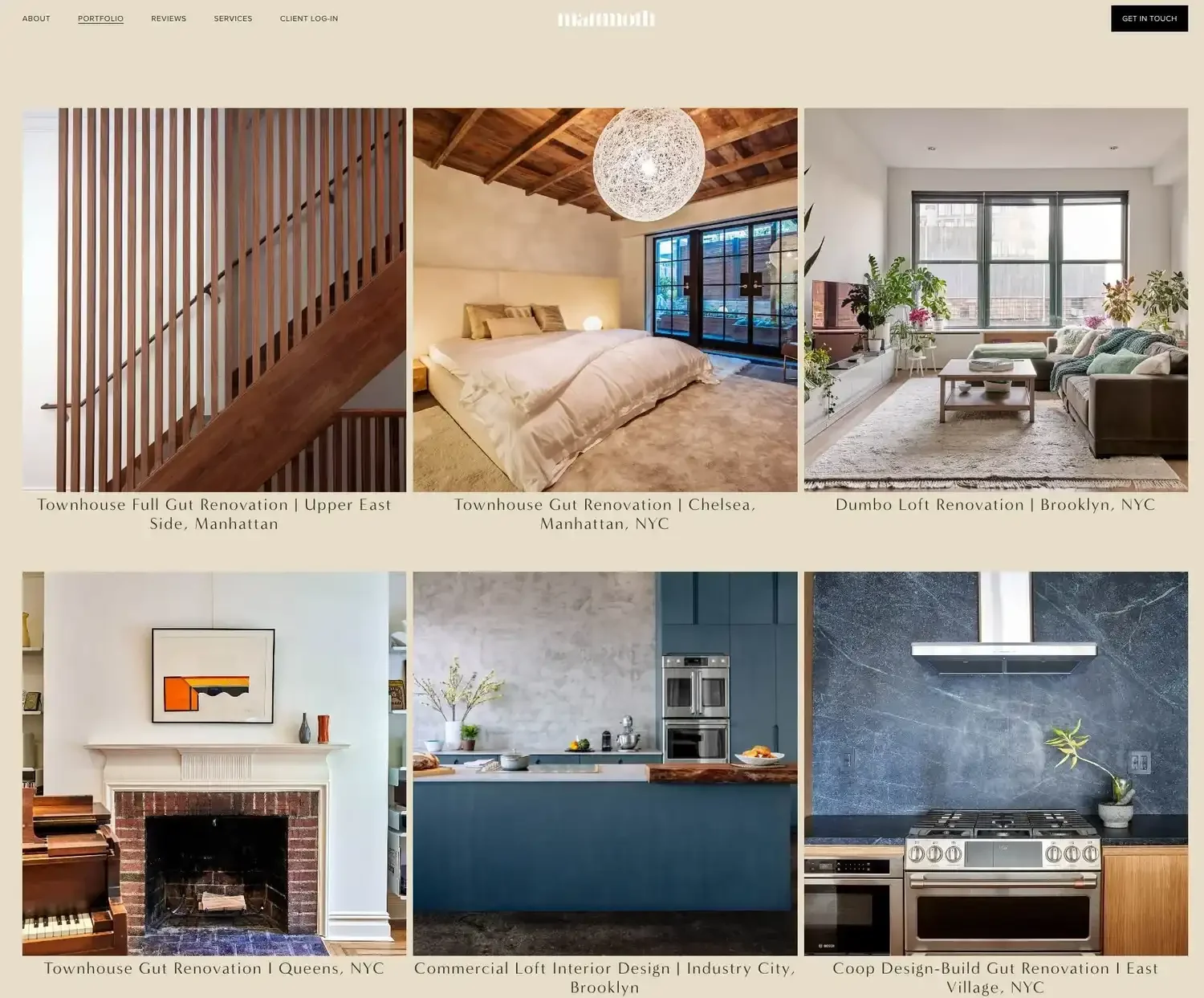Kitchen and Bathroom Renovation Guide: Upgrade Your Home Smartly in 2025
Renovating your kitchen and bathroom is an exciting opportunity to transform two of the most essential spaces in your home. These areas are not just functional, but also reflect your style and contribute to your daily comfort. Whether it's outdated fixtures, limited storage, or worn-out surfaces, a well-planned renovation can breathe new life into your home while boosting its value.
Imagine a kitchen that makes cooking and entertaining effortless, or a bathroom that feels like your personal spa. From upgrading countertops and cabinetry to choosing modern plumbing fixtures and lighting, every detail matters. With the right design choices, you can create spaces that are both beautiful and practical, tailored to your needs and lifestyle.
Table of Contents:
Key Takeaways
Renovating your kitchen and bathroom enhances functionality, style, and home value while improving daily comfort.
Assess the condition of each space to prioritize renovations, focusing on key issues like outdated fixtures or inefficient layouts.
Plan a comprehensive budget, including contingencies, as kitchen remodels typically cost more than bathroom upgrades.
Consider ROI when renovating; minor kitchen remodels recoup around 81%, while mid-range bathroom updates return about 70%.
Choose durable, energy-efficient materials and timeless designs to ensure long-term satisfaction and sustainability.
Work with experienced professionals and plan meticulously to stay on schedule, avoid hidden costs, and achieve your desired outcomes.
Kitchen and Bathroom Renovation - Which to Renovate First?
Deciding between a kitchen or bathroom renovation can feel overwhelming. Both spaces are essential to your daily life and significantly impact your home's resale value. Your choice depends on various factors, including your budget, time constraints, and the specific needs of each room. Whether you’re aiming for increased functionality, a modern style boost, or attracting potential buyers, evaluating your priorities will guide you toward the right decision.
Quick Tips:
Renovating both at the same time saves cost on labor & permits
Prioritize kitchen if resale value is key (higher ROI ~70–80%)
Factor in hidden costs: structural repairs, old plumbing/electrical upgrades
Plan for temporary kitchen/bathroom solutions if living onsite
Evaluating Room Conditions
Start by thoroughly assessing the current state of both areas. Is your kitchen outdated, with worn countertops and limited storage? Or does your primary bathroom suffer from poor lighting and aging fixtures? Take note of structural issues, aesthetic concerns, or appliances nearing the end of their lifespan. For instance:
Kitchens: Issues may include outdated cabinetry, crowded layouts, or inefficient appliances.
Bathrooms: Problems could range from cracked tiles, water-damaged walls, or insufficient vanity space.
If one space is more dated or dysfunctional than the other, tackling that renovation first often makes the most sense.
Return on Investment (ROI)
The potential ROI for kitchen and bathroom renovations is comparable if executed thoughtfully. A minor kitchen remodel can recoup approximately 81% of its cost, while a mid-range bathroom project often returns about 70%. Consider these impacts based on your renovation goals:
If selling your home: Focus on high-ROI improvements, such as energy-efficient appliances in the kitchen or a modern shower in the bathroom.
If staying in the home: Prioritize functionality and comfort. A spacious walk-in shower or improved kitchen workflow can greatly enhance daily use.
Time and Convenience
Kitchen renovations generally take longer to complete, often six to twelve weeks, depending on the project scope. Their larger size and plumbing or electrical complexity contribute to longer timelines. Bathrooms, on the other hand, often wrap up in about four to eight weeks.
If you’re pressed for time or need quick results, starting with the bathroom may make sense. Plus, not having a functional kitchen disrupts daily life far more than an unavailable bathroom.
Style and Long-Term Vision
Which space aligns more with your long-term vision? A modernized kitchen acts as the heart of your home, enhancing family gatherings and making meal prep a breeze. Meanwhile, a spa-like bathroom creates a personal retreat for relaxation.
Evaluating these factors—current conditions, budget, ROI, timeline, and overall vision—helps ensure your renovation decisions align with your goals.
Key Factors To Consider Before Renovation
Planning a kitchen or bathroom renovation involves more than just picking new tiles or countertops. Thoughtful preparation ensures a smooth process and avoids surprises. Here's a breakdown of the essentials to set your project up for success.
Budget Planning And Cost Estimation
Establishing a detailed budget with clear expense categories reduces stress during your renovation. Allocate funds for materials, labor, permits, and unexpected costs. Keep a contingency of 10–20% for surprises, like outdated plumbing or hidden wiring issues. For example, if your kitchen remodel budget is $30,000, reserve $3,000–$6,000 for unforeseen events.
Create an itemized budget covering:
Cabinetry and hardware
Countertops and flooring
Plumbing and electrical
Lighting fixtures
Quick tip: Start small by updating hardware or appliances, then plan larger changes as your finances allow.
Functional Needs And Layout Design
Prioritize functionality when outlining your kitchen or bathroom layout. In kitchens, aim for an efficient workflow using the "work triangle" concept between the sink, stove, and fridge. Maintain at least a 42-inch aisle width to ensure easy movement. A smart design choice, like placing prep stations next to the sink, significantly streamlines tasks.
For bathrooms, measure carefully. Ensure minimum clearances like 30"x60" for showers or 21 inches in front of toilets. Think about practical storage—opt for built-ins or floating vanities to maximize compact spaces. Also, consider universal design features like curbless showers and lever-style faucets for long-term accessibility.
Timeline And Project Scope
Define your renovation timeline based on project size and complexity. Typical renovations last 4–12 weeks, factoring in permits, material delivery, and contractor schedules. Breaking the process into phases—demolition, electrical rough-ins, and finishing—makes goals tangible. For a kitchen, order cabinetry and appliances early to avoid delays.
Use checklists to align responsibilities:
Secure permits
Schedule contractor milestones
Coordinate material deliveries
Short on time? Focus on critical upgrades like lighting or plumbing fixtures to strike a balance between speed and impact.
Efficient project management ensures minimal disruptions while staying on track, whether you're revamping a small bath or an entire kitchen.
Design And Material Selection
Design and material selection play a major role in achieving a renovation that balances aesthetics and functionality. Making informed choices ensures long-lasting satisfaction with your upgraded kitchen or bathroom. Focusing on the right materials, finishes, and styles guarantees both durability and timeless appeal.
Choosing Timeless Styles and Finishes
Timeless styles create designs that look fresh year after year, avoiding the need for constant updates. Neutral tones like whites, grays, and earthy shades can suit both contemporary and traditional interiors. Clean lines and uncluttered layouts enhance this adaptability, creating versatile spaces. For example, you could pair classic subway tiles for a backsplash with modern quartz countertops to blend style with practicality.
Opt for finishes that complement the overall design. Matte or satin finishes often age better than high-gloss counterparts as they resist showing wear. In cabinetry, consider shaker-style doors which combine simplicity with elegance. Avoid excessively trendy designs, as they might diminish your space’s long-term appeal.
Energy-Efficient and Sustainable Options
Incorporating eco-friendly and energy-efficient choices during renovations is both practical and environmentally responsible. Use materials like bamboo for cabinets or flooring, as its renewability doesn't sacrifice quality. Recycled glass countertops add a sustainable touch while maintaining contemporary visuals.
LED lighting not only reduces electricity consumption but also lasts longer than traditional bulbs, saving on maintenance. For plumbing, install low-flow faucets and showerheads to conserve water without impacting functionality. Consider ENERGY STAR-rated appliances that lower utility bills over time. For radiant comfort, add heated floors, particularly in bathrooms, using energy-efficient systems to keep the space cozy year-round.
Enhancing Storage and Organization
Utilizing the existing space effectively makes a significant difference in keeping your kitchen or bathroom well-organized. Custom cabinetry tailored to your needs ensures nothing is wasted. Choose deep pull-out drawers for pots and pans in kitchens or built-in shelves for toiletries in bathrooms.
Maximize limited storage areas with clever solutions like appliance garages, recessed shelves, or wall-mounted cabinets. Drawer organizers, trays, and bins also help keep smaller items accessible and avoid clutter. For tight spaces, mirrored storage units can serve dual purposes by blending reflection with functionality.
Value Of Kitchen And Bathroom Renovations
Kitchen and bathroom renovations offer significant benefits that extend beyond aesthetics. They make your home more functional and boost its market value, whether you're planning to sell or enhance your living space.
Impact On Home Value
Renovating kitchens and bathrooms stands out. Here’s what you can expect:
Kitchen Renovations:
Minor Remodels: Minor updates include cabinet refacing, fresh paint, upgraded countertops, and new appliances to modernize your kitchen without overspending.
Mid-Range Remodels: These projects might involve semi-custom cabinets, quartz countertops, and updated backsplashes and have a positive impact on your homes value.
Major Remodels: These renovations have the most impact on your homes value/ ROI and often feature complete layout changes, custom cabinetry, high-end appliances, and premium flooring.
Bathroom Renovations:
Mid-Range Remodels: Common upgrades include new tilework, updated plumbing, and contemporary fixtures.
Upscale Remodels: These cost more, but the ROI remains significant. Features like double sink vanities, freestanding tubs, and high-end materials add appeal to your bathroom.
For example, the 2021 Cost vs Value Report found kitchen remodels recoup nearly 73% of costs compared to 60% for bathroom updates. However, an upscale bathroom with spa-like details can rival a kitchen’s value if the space is already modernized.
Improving Daily Functionality And Comfort
Modernizing kitchens and bathrooms does more than update their look—it improves your quality of life.
Kitchen Upgrades That Make A Difference:
New Appliances: Energy-efficient dishwashers, refrigerators, and stovetops save money and conserve resources.
Better Storage: Add pull-out drawers or cabinetry organizers to streamline your daily tasks.
Lighting: Install pendant and under-cabinet lighting to brighten work areas and create ambiance.
Island Space: Add a kitchen island with seating for functionality and style.
During COVID-19, the kitchen became a focal point for families, emphasizing the need for practical layouts and updated systems. This trend endures as buyers look for move-in-ready kitchens.
Fresh Bathroom Ideas:
Modern Fixtures: Install rain showers, deep soaking tubs, or recessed lighting for an instant upgrade.
Efficient Systems: Water-saving toilets and low-flow showerheads align with sustainability goals.
Tiling and Painting: Clean lines and soothing colors transform a bathroom’s vibe.
For example, revamping your bathroom with heated floors or smart mirrors add a comfortable environment.
The Renovation Process
Transforming your kitchen or bathroom starts with a structured renovation plan. Each step—from consultation to project completion—ensures your vision comes to life efficiently and beautifully.
Beginning With Consultation And Planning
Every renovation begins by defining the project scope. Identify which elements need upgrades: outdated cabinets, inefficient layouts, or worn-out flooring. Gather design inspiration through platforms like Pinterest or create a project folder filled with ideas, including countertops, backsplash styles, and smart home technology.
Set a realistic budget based on the project's scale. Include a contingency fund for surprises like plumbing repairs. Designers use 3D renderings and floor plans at this stage to help homeowners visualize layouts, fixtures, and finishes. Discuss necessary permits to ensure compliance with local codes.
Hiring The Right Professionals
Professional contractors streamline the renovation process. Seek licensed contractors experienced in kitchen and bathroom projects. Request estimates, comparing options such as Good, Better, and Best to match your budget. Designers handle material sourcing, from tiles to cabinetry, ensuring quality products.
Certain tasks, like electrical and plumbing work, require skilled experts. These ensure installations meet safety standards. For guidance combining design with functionality, consider working with Mammoth NYC, a design-build studio that reinvents interiors with a consultative and personalized approach. Reach out for tailored designs that fit your lifestyle and aesthetic.
From Installation To Project Completion
Installation follows a systematic process:
Demolition: Remove old cabinets, fixtures, or flooring that no longer serve the space.
Framing: Adjust structural elements for layout changes, as needed.
Systems: Efficient plumbing, electrical setups, and waterproofing preparations come next.
Fixtures: Install countertops, cabinets (with hidden storage options), appliances, and tiles.
Finishing: Add hardware, lighting, and fresh paint for the perfect final touch.
Inspect the space thoroughly during the final walkthrough. Address deficiencies like misaligned grout or scratched fixtures immediately. Post-construction cleaning removes debris, leaving your renovated space ready for everyday use. Fully test all systems, and document any remaining concerns for prompt resolution.
Common Challenges And How To Avoid Them
Kitchen and bathroom renovations can transform your home but also come with challenges. Being aware of potential issues helps you overcome them efficiently, preventing delays and extra costs.
Staying on Schedule and Budget
To stay on track and within your budget, preparation is key. Miscommunication can cause delays. Working with experienced contractors ensures smooth communication and adherence to your plans. Vet professionals thoroughly, and insist on detailed contracts specifying timelines, costs, and responsibilities.
Procurement delays often create issues. Order materials early and stick to pre-approved product lists. This ensures everything arrives on time and matches your requirements. Hidden costs can crop up during any renovation. Setting aside 10-20% of your budget for contingencies can help manage unexpected expenses, like addressing outdated wiring or water damage.
Useful Tips
Use project management software or apps for schedule tracking.
Regularly meet with your contractor to review progress.
Check material availability and production times before finalizing choices.
Dealing with Unexpected Issues
Renovations often uncover unforeseen problems. Addressing them swiftly minimizes disruptions. Structural problems, like damaged subflooring or hidden dry rot, might surface during demolition. Scheduling inspections before starting work ensures your contractor identifies potential risks early, reducing complications later.
Mismatched material deliveries are another common issue. Confirm dimensions and specifications, such as cabinet sizes or countertop thicknesses, before shipping. Verifying details avoids delays or reinstallation costs. Last-minute design changes inflate budgets and disrupt timelines. Finalize all design choices before construction begins.
Actionable Steps
Perform pre-renovation inspections for hidden problems.
Double-check material orders with your supplier.
Create a detailed design plan and stick to it.
Taking on a kitchen or bathroom renovation becomes simpler when you avoid these challenges from the outset. Partnering with experts like Mammoth NYC, a design-build studio reinventing interior design, lets you confidently navigate complexities. Contact them today to turn your renovation vision into reality with expert guidance and a seamless experience.
Why Choose Mammoth for Kitchen and Bathroom Renovations?
Mammoth is a design-build company, specializing in renovating in NYC. We’ve leveraged our collective 25 years of local expertise to design a company that makes renovating beautiful, and simple.
As a design-build company serving NYC’s Manhattan and Brooklyn neighborhoods, Mammoth’s strength is full–gut design-build interior renovations. Our work experience ranges from quintessential NYC brownstones in Brooklyn to cool condos, small homes or business loft transformations in Manhattan.
Now let's visit some recent residential renovation projects completed by Mammoth - your trusted NYC general contractor.
Client Reviews for Mammoth
“We worked with Maryana on a gut renovation and furnishing of our 4,000 sq. ft. Union Square loft. We changed the layout, renovated two bathrooms, added a new kitchen, and furnished the space. Maryana managed the entire process -- from design to managing the contractors, and schedule and we couldn't be happier with the result. The space is stunning and functional. I highly recommend her and her team.”
— Joe Cross Reviewed on Houzz
“I had the pleasure to work with Mammoth Projects on an apartment renovation for my new Harlem three-bedroom. We redid every room, which included a full gut of the kitchen and bathrooms, custom millwork for the bedrooms and living rooms, new flooring and wallpapering all over. My wife and I were afraid the process would completely consume our lives, but we had the opposite experience. Maryana and her team supervised every step of the construction from start to finish, and we were able to quickly get back to our own work and trust Mammoth completely with our new home. Maryana clearly put a lot of heart into the design, and we are proud to have a home with all kinds of original furniture, lighting, and cabinets that went so much beyond what we had planned, without going over budget. I fully recommend Maryana and Mammoth, as I had a great experience with their service and design.”
— Rafael Waack Reviewed on Houzz
These projects represent just a sample of our experience. Fresh, unique, authentic - that's how we define the homes we've had the honor of gut renovating. And it’s not simply about creating beautiful designs; it’s about helping you reimagine your space around your needs and ideals to create environments for maximum pleasure and functionality.
So whether you're contemplating renovating a tiny apartment, updating a condo, transforming a loft space, or gutting a townhouse, we invite you to connect with us at Mammoth. With dedication to each task and a keen eye for every detail, we serve as your one-stop-shop general contractors in New York City - prepared to breathe life into your home renovation dreams.
Conclusion
Renovating your kitchen or bathroom is an exciting opportunity to enhance your home's functionality, style, and value. With careful planning and a clear vision, you can transform these essential spaces into areas that truly reflect your needs and preferences.
By addressing potential challenges early and working with experienced professionals, you can avoid common pitfalls and ensure a smooth renovation process. Whether you’re upgrading for comfort, resale value, or both, thoughtful decisions will make a lasting impact on your home and lifestyle.
Contact Mammoth
See more examples of our renovation work in our portfolio.
Read more about our design-build services for residential remodeling and office remodeling.
Connect with us about a project you have in mind.
Frequently Asked Questions
What is the average cost of a kitchen remodel?
On average, a kitchen remodel costs over $25,000. However, smaller updates may cost less, while high-end renovations with premium materials can exceed $70,000. Be sure to budget for unexpected expenses by including a contingency fund.
How much does a bathroom renovation usually cost?
Bathroom renovations typically range from $10,000 to $50,000, depending on the size, scope, and materials chosen. More minor improvements can cost less, while high-end upgrades may increase overall expenses.
Should I renovate the kitchen or bathroom first?
Decide based on your budget, time constraints, and needs. Kitchens usually cost more and take longer to renovate, while bathrooms are quicker and less expensive to update. Evaluate which area requires attention first for functionality and aesthetics.
What is the return on investment (ROI) for renovations?
Minor kitchen remodels often recoup about 81% of the cost, while mid-range bathroom renovations typically offer a 70% return. Focus on balancing aesthetics and functionality to maximize ROI.
How long does it take to renovate a kitchen?
Kitchen renovations generally take 6-12 weeks, depending on the project size and complexity. Additional time may be needed for permits, material deliveries, and inspections.
How long does a bathroom renovation take?
Bathroom renovations usually take 3-6 weeks. If unforeseen challenges arise, such as plumbing issues or material delays, it may take longer.
What is the biggest expense in a kitchen remodel?
Cabinetry is typically the largest expense in a kitchen remodel, costing up to 40% of the overall budget. High-end appliances and countertops also significantly impact the budget.
What is the most expensive part of a bathroom remodel?
Labor costs, including plumbing and electrical work, are often the most expensive parts of a bathroom remodel. High-end fixtures, custom vanities, and premium tiles also add to the cost.
How can I stay on budget during renovations?
To stay on budget, plan thoroughly, get detailed quotes, prioritize needs over wants, and set aside a contingency fund. Communicate clearly with contractors and purchase materials early to avoid delays.
What are some design tips for timeless kitchens and bathrooms?
Choose neutral color palettes, durable materials, and energy-efficient fixtures. Focus on functionality, ample storage, and layouts that meet your long-term needs while maintaining a classic appeal.

